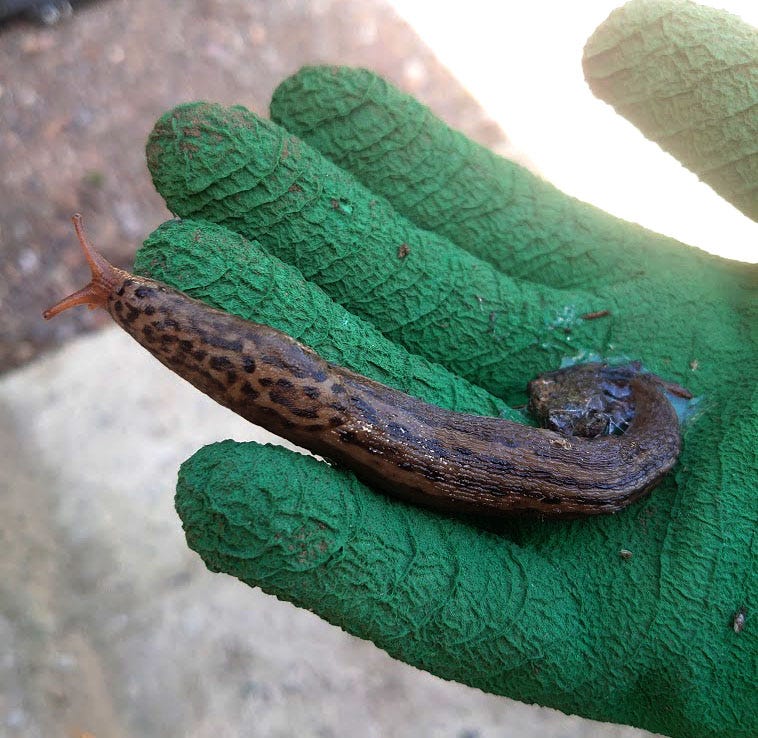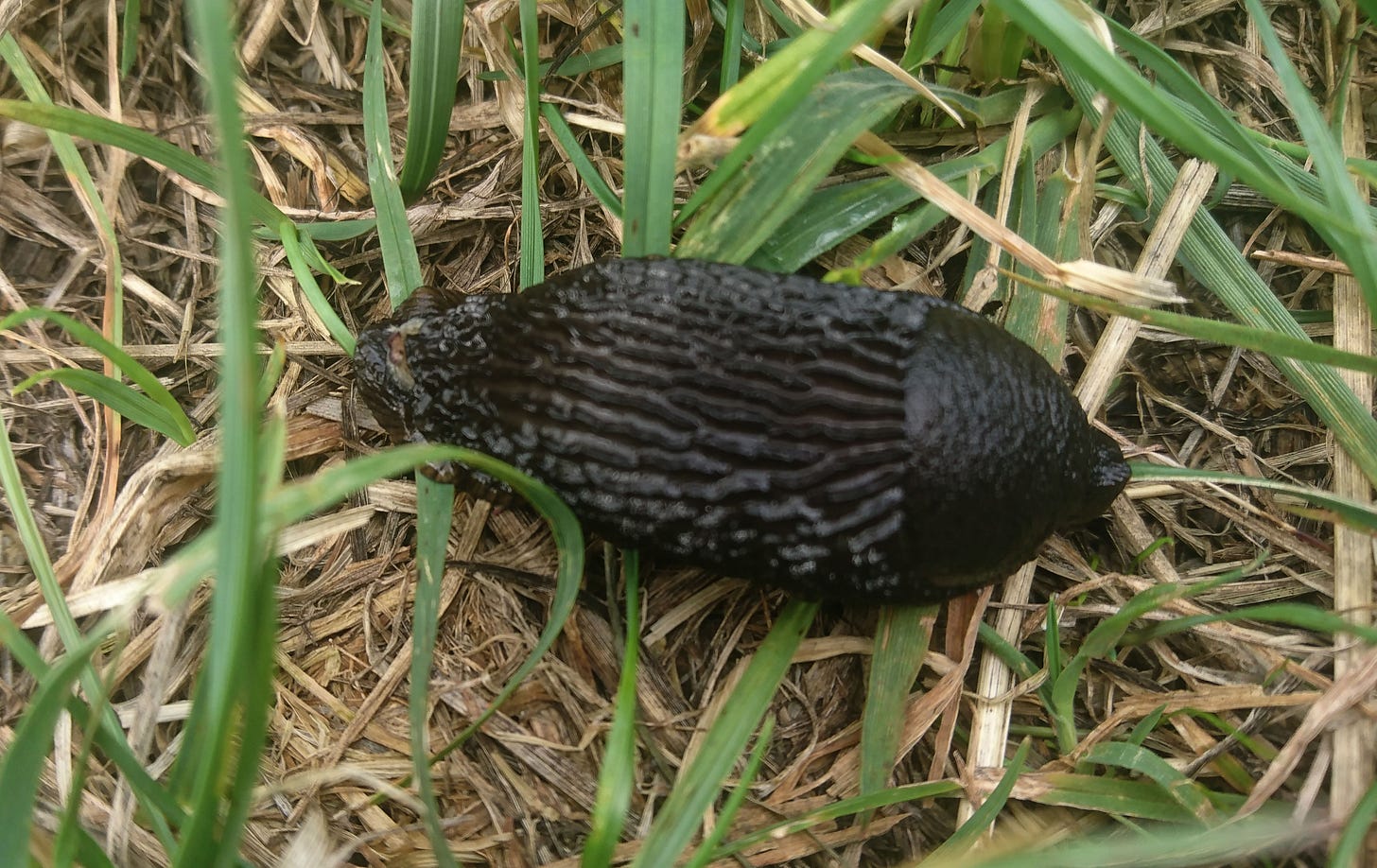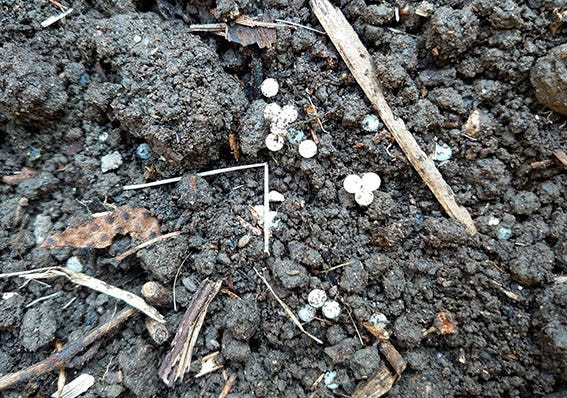SLUGS - CAN WE LEARN TO LIVE WITH THEM?
Yes, I know its a bad year, but they have an important role in the garden - we don't want to obliterate them all, so how can we live with them and love their role in the garden?
So has my opening image got you squirming or intrigued? Did you know that slugs can get quite so large?
Yes, its taken in my garden in Somerset and not a rainforest in Costa Rica. Is it a friend or foe? Have you guessed yet? Read on to find out more.
A warm wet winter
This winter has caused problems for lot of our plants and some of our animal life, but there’s one group that’s thrived - slugs and snails. I don’t know about your growing space, but there are slugs, snails and clusters of eggs under everything in my garden. It doesn’t bode well for the growing season ahead, and I am very wary of planting and veg out at the moment!
So, this week my focus is on what we can do in the garden or allotment to cope with the mollusc invasion. I’m not looking to wipe them out, as they have a critical role to play in food chains and decomposition, but I do want a bit more control around the veg beds and balance in the garden ecosystem.
We have to remember that while the average slug can eat 40 times its weight in a year, only a small proportion of this is living plant material. They eat mostly decaying leaves, damaged fruits and anything that goes on the compost. They will also eat animal droppings and even dead bodies, which is really useful!
Lots of different types of slugs
Some slugs are more destructive than others. You may not like the look of the large black slug, but that's not as damaging as other types, because it prefers rotting plant material and dead bodies rather than your precious plants. The ones to watch out for are the underground species, such as the keeled slug with its distinctive ridge running down the middle of its grey-brown or black body.
Now - back to the opening image. I think this is a fabulous creature and I was delighted to find it in my garden. It’s the leopard slug or great grey slug (Limax maximus. I was so thrilled to find it. It’s nocturnal and believe it or not, it usually returns to the same hideaway every night.
Why do I want more of these beasties? They are omnivores – so have a mixed diet that comprises mostly of dead plants,so it’s a detritivore too, but it’s also known to attack small slugs that venture close, so it does offer the gardener a protection service!!! So please welcome these beasties into your garden.
Slug life
Slugs are toothless, feeding with their rasping tongue or radula, and its rather like a piece of sandpaper. They hide in shady places during the day, often under flower pots, stones, bits of wood, long grass, etc and emerge on humid nights to feed and they can range a surprisingly long way as you can see from the glistening mucus trails along the ground. They lay their round, white eggs in clusters under rocks, in decaying wood, down the sides of raised beds etc, all places where they are out of sight and safe from predators.
Here are my top tips for making your growing space less slug friendly





